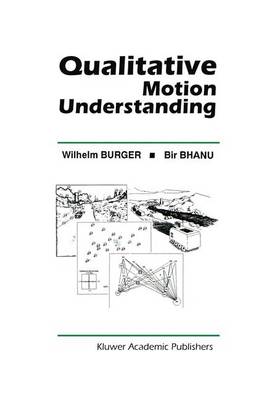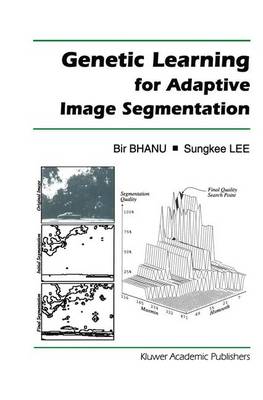The Springer International Series in Engineering and Computer Science
2 primary works
Book 184
Mobile robots operating in real-world, outdoor scenarios depend on dynamic scene understanding for detecting and avoiding obstacles, recognizing landmarks, acquiring models, and for detecting and tracking moving objects. Motion understanding has been an active research effort for more than a decade, searching for solutions to some of these problems; however, it still remains one of the more difficult and challenging areas of computer vision research.
Qualitative Motion Understanding describes a qualitative approach to dynamic scene and motion analysis, called DRIVE (Dynamic Reasoning from Integrated Visual Evidence). The DRIVE system addresses the problems of (a) estimating the robot's egomotion, (b) reconstructing the observed 3-D scene structure; and (c) evaluating the motion of individual objects from a sequence of monocular images. The approach is based on the FOE (focus of expansion) concept, but it takes a somewhat unconventional route. The DRIVE system uses a qualitative scene model and a fuzzy focus of expansion to estimate robot motion from visual cues, to detect and track moving objects, and to construct and maintain a global dynamic reference model.
Qualitative Motion Understanding describes a qualitative approach to dynamic scene and motion analysis, called DRIVE (Dynamic Reasoning from Integrated Visual Evidence). The DRIVE system addresses the problems of (a) estimating the robot's egomotion, (b) reconstructing the observed 3-D scene structure; and (c) evaluating the motion of individual objects from a sequence of monocular images. The approach is based on the FOE (focus of expansion) concept, but it takes a somewhat unconventional route. The DRIVE system uses a qualitative scene model and a fuzzy focus of expansion to estimate robot motion from visual cues, to detect and track moving objects, and to construct and maintain a global dynamic reference model.
Book 287
Genetic Learning for Adaptive Image Segmentation
by Bir Bhanu and Sungkee Lee
Published 30 September 1994
Image segmentation is generally the first task in any automated image understanding application, such as autonomous vehicle navigation, object recognition, photointerpretation, etc. All subsequent tasks, such as feature extraction, object detection, and object recognition, rely heavily on the quality of segmentation. One of the fundamental weaknesses of current image segmentation algorithms is their inability to adapt the segmentation process as real-world changes are reflected in the image. Only after numerous modifications to an algorithm's control parameters can any current image segmentation technique be used to handle the diversity of images encountered in real-world applications.
Genetic Learning for Adaptive Image Segmentation presents the first closed-loop image segmentation system that incorporates genetic and other algorithms to adapt the segmentation process to changes in image characteristics caused by variable environmental conditions, such as time of day, time of year, weather, etc. Image segmentation performance is evaluated using multiple measures of segmentation quality. These quality measures include global characteristics of the entire image as well as local features of individual object regions in the image.
This adaptive image segmentation system provides continuous adaptation to normal environmental variations, exhibits learning capabilities, and provides robust performance when interacting with a dynamic environment. This research is directed towards adapting the performance of a well known existing segmentation algorithm (Phoenix) across a wide variety of environmental conditions which cause changes in the image characteristics. The book presents a large number of experimental results and compares performance with standard techniques used in computer vision for both consistency and quality of segmentation results. These results demonstrate, (a) the ability to adapt the segmentation performance in both indoor and outdoor color imagery, and (b) that learning from experience can be used to improve the segmentation performance over time.
Genetic Learning for Adaptive Image Segmentation presents the first closed-loop image segmentation system that incorporates genetic and other algorithms to adapt the segmentation process to changes in image characteristics caused by variable environmental conditions, such as time of day, time of year, weather, etc. Image segmentation performance is evaluated using multiple measures of segmentation quality. These quality measures include global characteristics of the entire image as well as local features of individual object regions in the image.
This adaptive image segmentation system provides continuous adaptation to normal environmental variations, exhibits learning capabilities, and provides robust performance when interacting with a dynamic environment. This research is directed towards adapting the performance of a well known existing segmentation algorithm (Phoenix) across a wide variety of environmental conditions which cause changes in the image characteristics. The book presents a large number of experimental results and compares performance with standard techniques used in computer vision for both consistency and quality of segmentation results. These results demonstrate, (a) the ability to adapt the segmentation performance in both indoor and outdoor color imagery, and (b) that learning from experience can be used to improve the segmentation performance over time.

